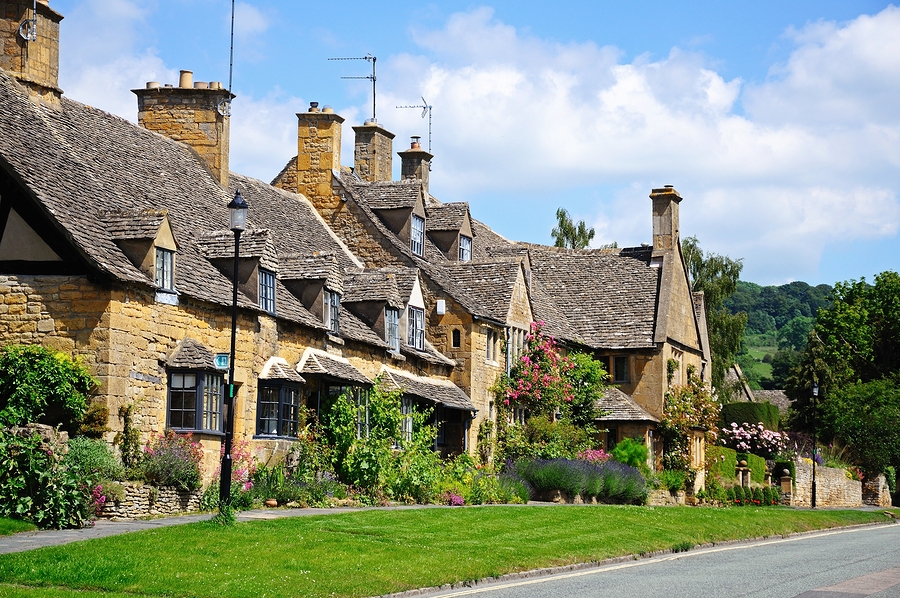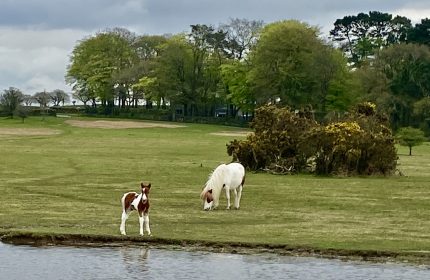A dozen or so things you never knew about The Cotswolds
The fourth in our series of 'I never knew that about the beauty spots of Britain'
Britain is the most beautiful country in the world when the sun shines. And even when it doesn’t there are myriad tales and facts galore to enhance the beauty, whatever the weather. Here are some of them – they may make you want to go there….
A dozen or so things you never knew about…
The Cotswolds
- The Cotswolds is an area of limestone upland covering almost 800 square miles across five counties, Gloucestershire, Oxfordshire, Warwickshire, Wiltshire and Worcestershire. The scenery is quintessentially English, with rolling open hills and villages of honey-coloured stone cottages, and in 1966 the Cotswolds became an Area of Outstanding Natural Beauty, making it the second largest protected landscape in England after the Lake District.
- As well as being blessed with natural beauty the Cotswold air seems to inspire innovation and creativity – Champagne, the lawn mower, Alice in Wonderland, cheese rolling and the River Thames all have their origins in the Cotswolds.
- Both sources of the River Thames are in the Cotswolds, at Thames Head near Cirencester where the water seeps from beneath an ash tree and Seven Springs near Cheltenham where it bubbles up through stones in a dingly dell to makes its way to mighty London. While Thames Head is the most widely accepted source, Seven Springs is further from the mouth of the Thames and, unlike Thames Head, never dries up.
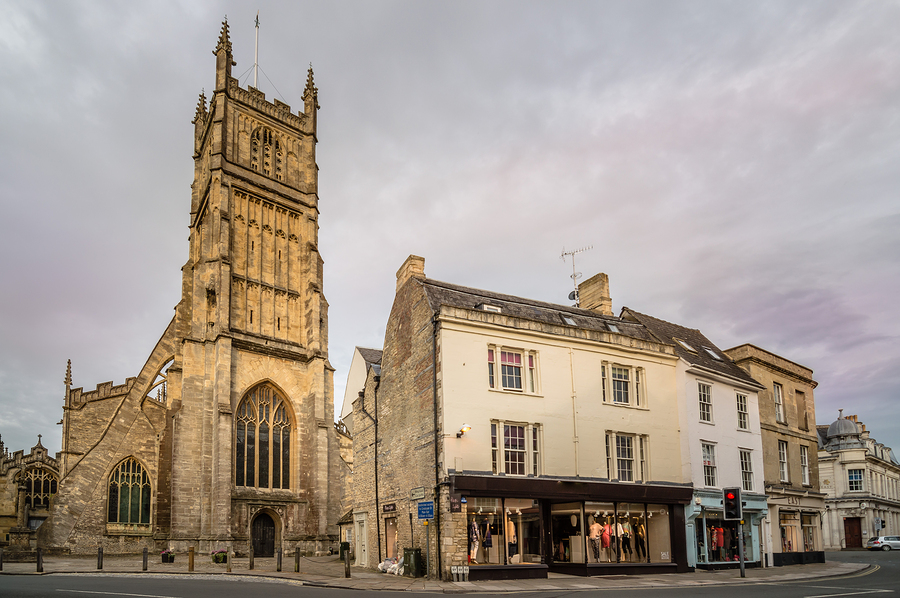
The Church of St. John the Baptist in Cirencester, a market town in the Cotswolds.
- Champagne was invented by a Cotswold man, Christopher Merrett, who was born in Winchcombe in 1614. In 1662 he invented a technique for making sparkling wine using sugar and molasses, taking advantage of a new type of glass containing iron and manganese that had been invented in 1630 by Admiral Sir Robert Mansell which was strong enough to contain the fermentation process. Merrett’s ‘methode traditionelle’ was adopted in 1695 by a French winemaker and monk from the Champagne district of France called Dom Perignon who used it to give sparkle to his own wines.
- Charles Dodgson (Lewis Carroll) first met Alice Liddell, for whom he wrote Alice in Wonderland, in the Cotswolds, in the gardens of Cowley Manor, an Italianate mansion in the hills above Cheltenham once owned by Sir James Horlick (1844-1921), founder of Horlick’s Malted Milk Company. Alice’s uncle, an old friend of Dodgson, was the Rector at Cowley ‘s 12th-century St Mary’s church, which stands inside the grounds of the manor house, and Alice frequently stayed with him in the Rectory at Cowley, as did Charles Dodgson. They often enjoyed walks in the manor grounds together and it is believed that it was on one of these occasions that they saw a rabbit disappear down a hole under a hedge, the event that inspired the opening scene of Alice’s Adventures in Wonderland. Cowley Manor is now a boutique hotel owned by Jessica Sainsbury.
- The lawn mower was invented in the Cotswold town of Stroud in 1850 by locally born engineer Edwin Budding. Known as a Ferrabee, it was manufactured just down the road at the Phoenix Ironworks in Thrupp, and the first customer was Mr Curtis, the head gardener at London Zoo.
- The world’s oldest and most famous cheese rolling event takes place in the Cotswolds. On Bank Holiday Monday at the end of May every year slightly nutty people descend on Cooper’s Hill above Gloucester to chase an eight pound Double Gloucester cheese down a precipitous 1-in-2 slope in the hope of winning – a Double Gloucester cheese! The cheese has been rolled without a break since within living memory and the ceremony is thought to date back to pagan times with its roots in fertility rites and supplications for a bountiful harvest. At the top of the hill are the remains of a pre-Roman fort which may have something to do with it. Every year there are scores of injuries and in 1997 the cheese bounced into the crowd sending a spectator flying down the hill before hitting him on the head at the bottom.
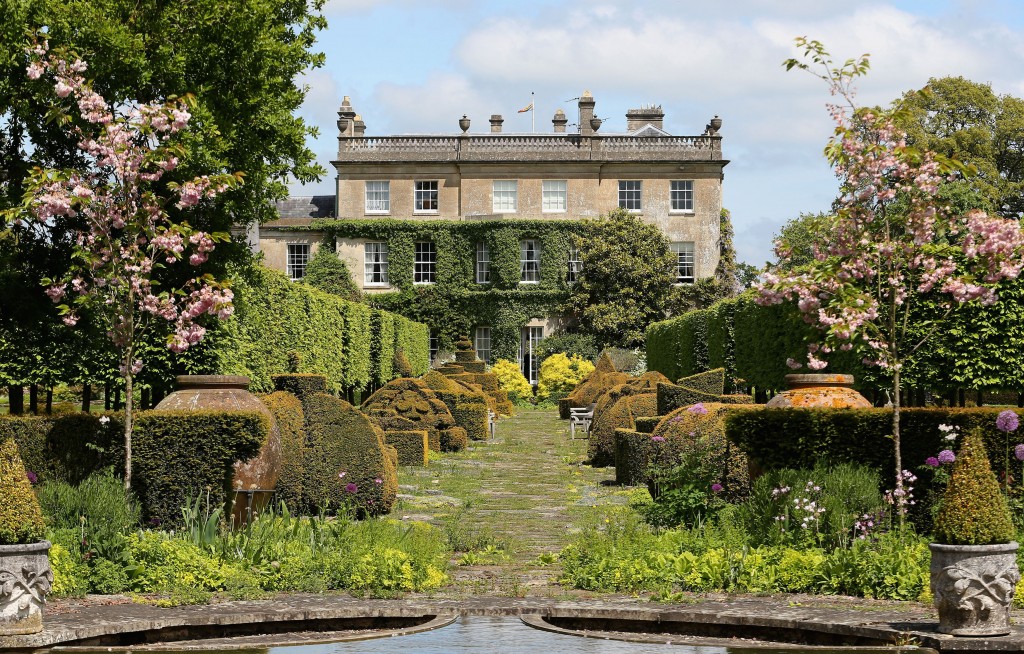
Highgrove House
- The Cotwolds is royal country – Prince Charles has his country house at Highgrove near Tetbury, Princess Anne’s lives at Gatcombe Park near Minchinhampton, Prince Michael of Kent used to live at Nether Lypiatt near Stroud and Catherine Parr, sixth wife of Henry VIII and the only one to survive him, is buried in the chapel of Sudeley Castle in Winchcombe, one of the few castles in England that is still lived in. Sudeley was the home of her fourth husband Sir Thomas Seymour, and Catherine died there in 1548, aged 36, from complications in childbirth.
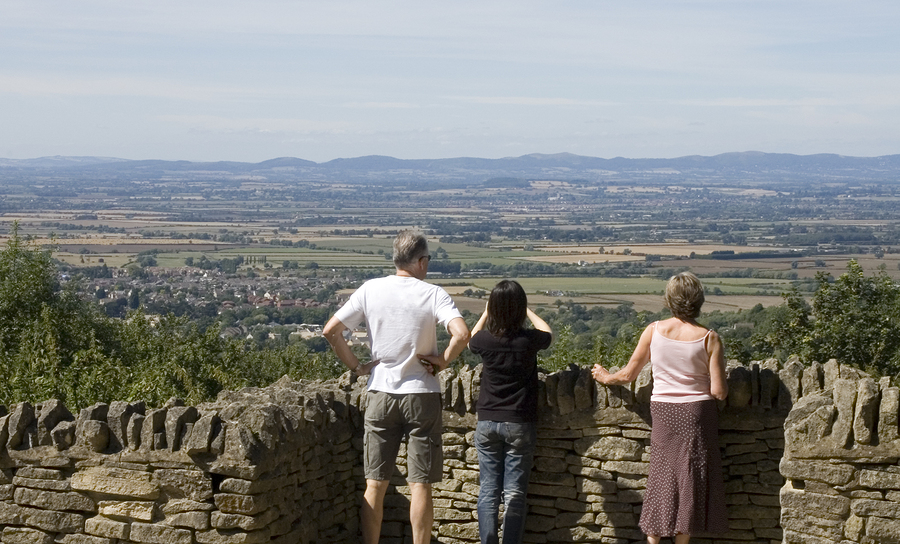
Cleeve Hill
- The once widely accepted definition of a mountain as an elevation over 1000 feet high makes Cleeve Hill, highest point in the Cotswolds at 1083 feet, the nearest mountain to London.
See part three – The Peak District
Find out more about Christopher Winn’s ‘I Never Knew That’ here
Latest posts by Christopher Winn (see all)
- A dozen or so things you never knew about Loch Lomond and Dunbartonshire - October 20, 2021
- A dozen or so things you never knew about Bedfordshire - May 18, 2021
- A dozen or so things you never knew about Berwickshire - March 18, 2021
- A dozen or so things you never knew about The Surrey Hills - January 26, 2021
- A dozen or so things you never knew about historic Monmouthshire - February 10, 2020









